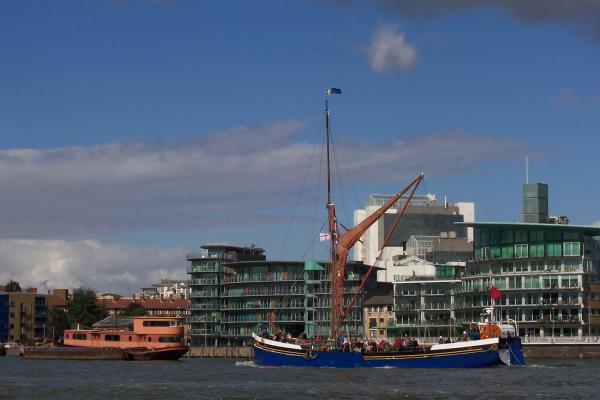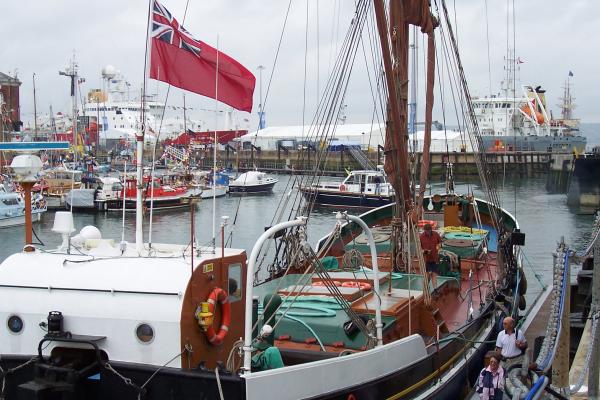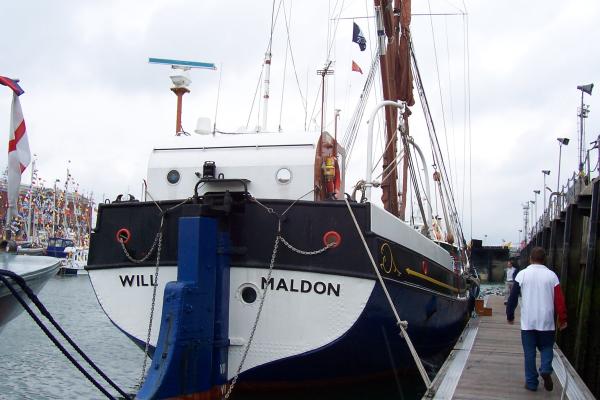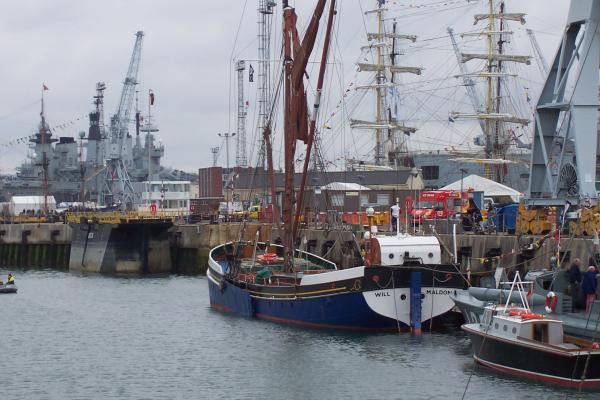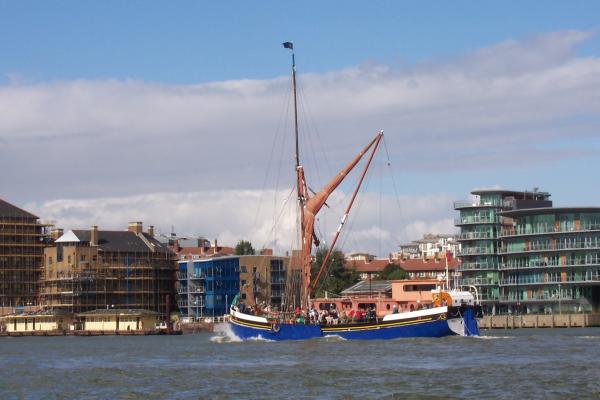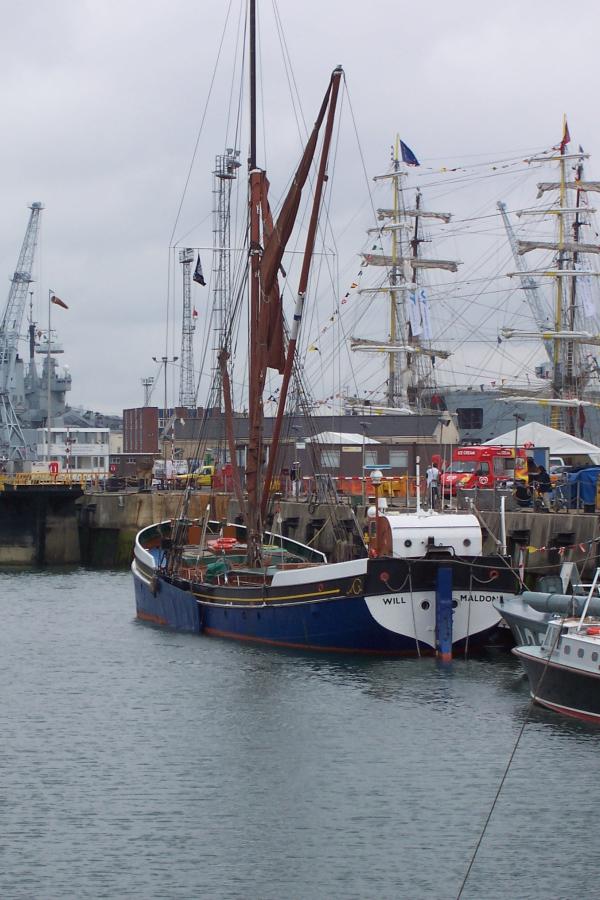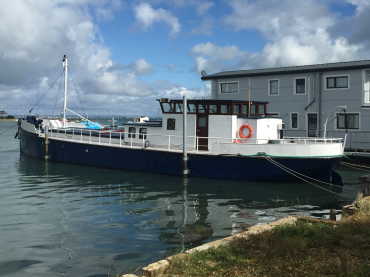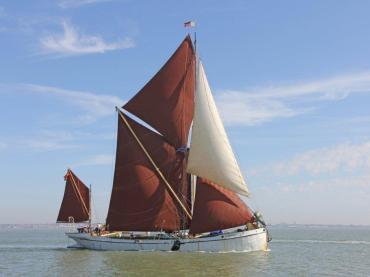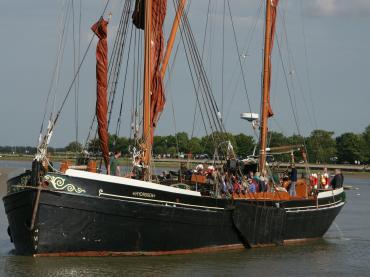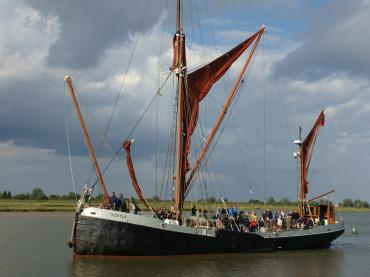

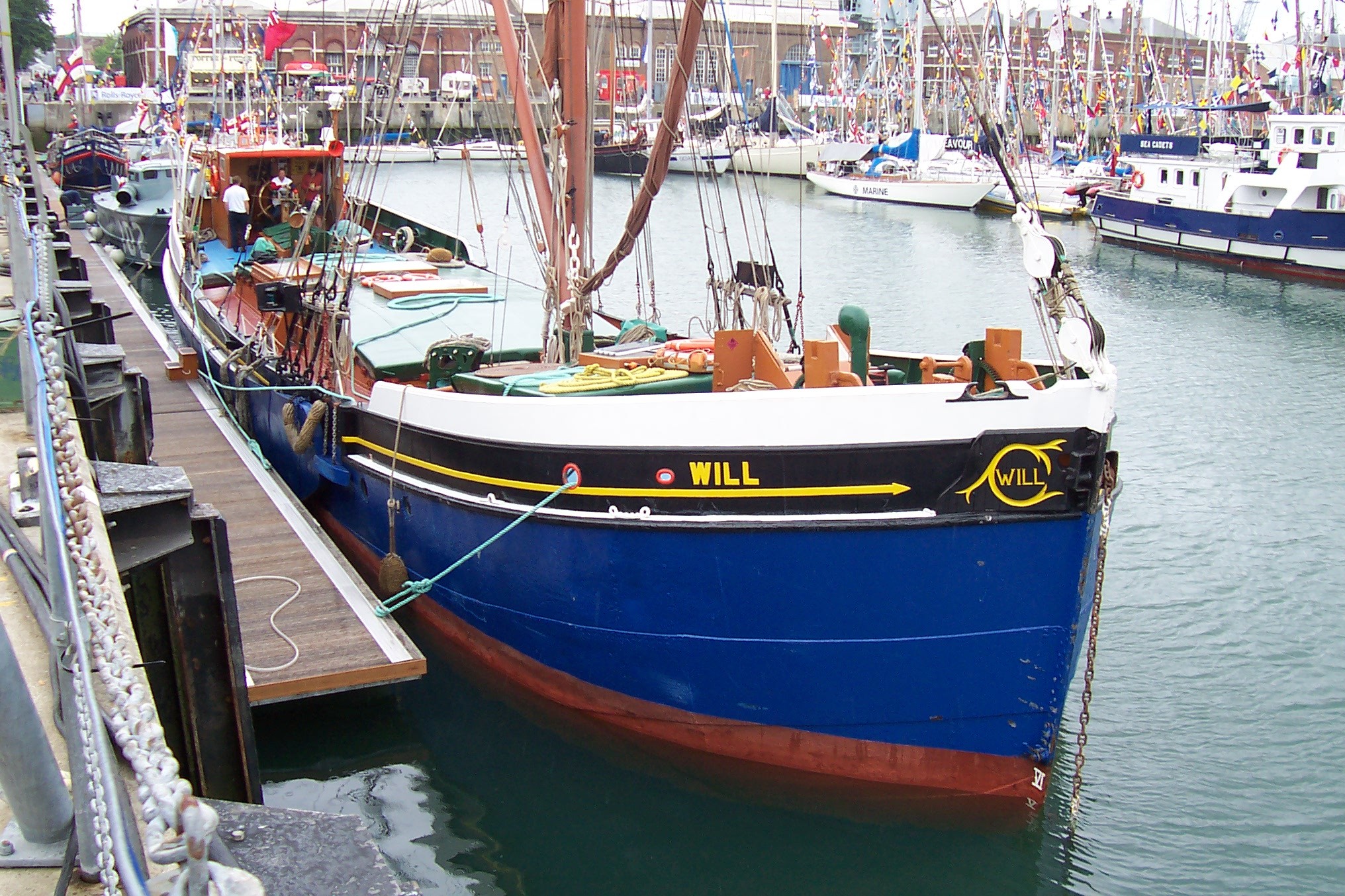
Previous names
- Will Everard
Details
Construction
Dimensions
History
Completed in 1925 as the WILL EVERARD by J H Fellows & Co, Great Yarmouth, for F T Everard and Sons Ltd, of Greenhithe, this vessel was one of four sister steel-hulled spritsail barges built between 1925 and 1926 at the same yard for this owner. They were large coasting barges able to load 280 tons of cargo and boasting the largest set of canvas of all the sailing barges – some 5,600 sq ft, not including the balloon foresail. She was mulie rigged, with a gaff mizzen. Everard’s used her in the coasting trade for over 40 years, often within the Thames and Medway estuaries but also to a variety of ports on the south and east coasts from Poole to Goole. They secured the contract to supply coal from Keadby on the Humber to the gasworks at Margate, and WILL EVERARD once made this passage in 30 hours. Her other cargoes included cement, china clay, oil cake and rice. She was also a frequent competitor in barge matches, when her normal crew of three was augmented by extra hands, but was not a very successful racing barge. In trade WILL EVERARDhad a grey hull with pink bottom, black rails and a gold sheer line. She traded under sail alone until 1950 when an auxiliary engine was fitted. The loss of space reduced her cargo load to 240 tons of grain.
From 1932 until a little while after she had her engine fitted her master was Jim Uglow MBE, who was decorated for gallantry, devotion to duty and meritorious service on the barge during the Second World War, and is believed to be the only barge master so honoured. During the war WILL EVERARD completed 147 coasting voyages and carried 38,345 tons of various cargoes including grain, sugar beet, oil cake, fertilisers, flour, sugar and cement. These voyages were mostly between London and Ipswich or Yarmouth, as well as down channel from London to Southampton. Following the fall of France, from June 1940 to July 1941 she was confined to trading between Cowes or Newport, Isle of Wight, and Southampton or Poole. In August 1940 she was machine-gunned by enemy fighters on two days in succession when lying at the Medina Cement Mills in the Isle of Wight. When lying at the Phoenix Wharf, Southampton, during a bombing raid in September 1940, she was lifted partly out of the water and then hit ground, hogging her and damaging her bottom. The fore hold was filled with debris from surrounding buildings, the hatches were blown over the side, and the skylight blown in. The crew all had narrow escapes, as they did again in November 1941 when sailing off the east coast in company with the Everard barge Britisher, which was mined and sunk without trace with no survivors. On 9 March 1943, when off the Whitaker, the WILL EVERARD was attacked by a Fokker-Wulf 109 which put 1,000 holes into her mainsail and sprayed the decks with cannon-fire: again the crew escaped without injury.
The barge continued trading after the war and worked from Hull to Zwyndrecht near Rotterdam. She was sold in 1966 for £750 to Vernon Harvey under the condition that she did not retain the same name, so was renamed simply WILL. Used as a store, she languished in the Blackwater estuary for two years and was then sold to John Hobbins, a barge enthusiast who re-rigged her and installed a new engine in 1972. Her hold was converted into a spacious saloon. In 1976 she was sold to OCL (Overseas Containers Ltd) and after an extensive refit at Maldon was used for sales promotion and corporate hospitality, and had a green hull. The shipping group P & O acquired a controlling interest in OCL in 1986 and WILL became the property of P & O Management Group, who repainted her hull in their distinctive dark blue. Her saloon was lined with mahogany panelling and equipped with luxury fittings for use as a floating dining room by the company’s directors. During the autumn and winter seasons she was based in London, but spent the rest of the year visiting various ports around the United Kingdom and the near continent. In 1999 she was sold to Sue Harrison, who had been her captain since 1982, in partnership with Malcolm Fisher.
In 2004 WILL was sold and refitted in 2006 to return her to her original rig. She then entered the 2006 Thames match and won the coasting class with Ian Ruggles as skipper. In her 2007 refit she was returned to her original hull colours of a light grey hull, pink bottom, black rails with a gold sheerline, and white bow boards and quarter boards. Also, her bottom was replaced, which involved removing and later re-instating 100 tons of ballast. She is now based in St Katharine Docks as a floating restaurant and for charter work and can carry 50 passengers.
Source: Paul Brown, Historic Sail, The History Press.
https://www.thamesleisure.co.uk/sailing-barge-will/
Key dates
-
1925
Completed as the WILL EVERARD by J.H. Fellows & Co, Great Yarmouth, for F.T. Everard & Sons Ltd of Greenhithe
-
1950
Traded under sail alone until 1950 when an auxiliary engine was fitted
-
1939-45
During the Second World War WILL EVERARD completed 147 coasting voyages around southern England
-
1966
Sold to Vernon Harvey and renamed WILL
-
1972
Sold to John Hobbins and her hold was converted to a saloon
-
1976
Bought by Overseas Containers Ltd for use as sales promotion and corporate hospitality venue
-
1986
WILL became property of P & O Management Group after their acquisition of OCL
-
1999
Sold to Sue Harrison, her captain since 1982, in partnership with Malcolm Fisher
-
2004
Sold and refitted to return her to her original rig to Mark Tower as her owner from 2004 until 2019?
-
2006
Entered 2006 Thames match and won coasting class with Ian Ruggles as skipper
-
2007
After refit returned to original hull colours of light grey hull with white bow and quarter boards
-
2012
Vessel selected for Avenue of Sail, Queen's Diamond Jubilee Pageant on 3 June 2012
-
2013
40% shares were offered to what is now the current owner
-
2019
60% share and full ownership taken by present owner in 2019
Sources
Carr, Frank, Sailing Barges, 1971
Hugh Perks, Richard, Sprts'l: A Portrait of Sailing Barges and Sailormen, Conway Maritime Press, 1975
The Last Berth of the Sailorman, Society for Spritsail Barge Research, 1987
Wood, D G, Barges Sailing Today: Sailing Barge Information Pamplet No: 1, Society for Spritsail Barge Research, 1995
Classic Boat - Advert: David East Yachting Ltd 'Thames Sailing Barge WILL', February 1998
Ships Monthly: A Captain and her Ship, October 1988
Own this vessel?
If you are the owner of this vessel and would like to provide more details or updated information, please contact info@nationalhistoricships.org.uk

